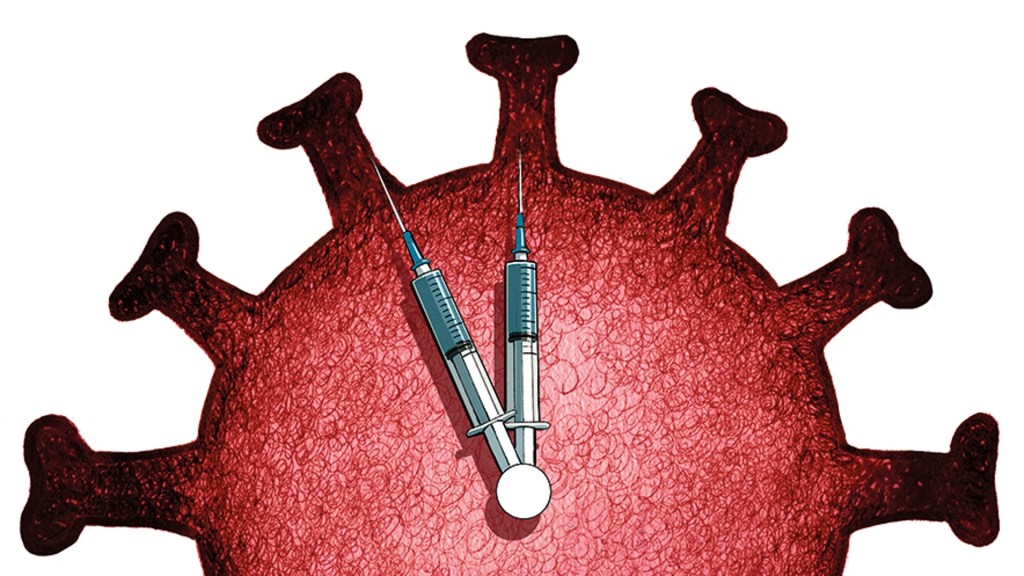I’m hooked on vaccine data. Barely an hour at my desk goes by without hitting refresh on a website telling me how many doses of COVID-19 vaccines have gone into arms around the world. A good day in either the US, where I live, or the UK, where I’m from, brings a frisson of excitement not dissimilar to what I imagine a gambling addict feels when his number hits. Slow progress sends me into a sulk. Either way, I need my fix.
The cause of my addiction is not complicated: I am fed up of this wretched pandemic. And the more aggressive the vaccination drive, the sooner it is over. Informing all of this is a mixture of impatience and optimism. Impatience because, well, this sucks. Optimism because the vaccines really do work, reducing transmission, practically eliminating serious illness and death, and allowing us to entertain the possibility of a normal life.
Maddeningly, the Biden administration and the public health establishment doesn’t seem nearly as impatient or optimistic as I am.
The White House’s approach to the vaccine appears to be driven first and foremost by expectation management. Better to underpromise than underdeliver is the plodding logic of a president who in his first weeks in office was still calling his initial one-million-vaccines-a-day target ‘ambitious’ after it had been met.
When Biden and his team do demonstrate urgency, it relates to the $1.9 trillion economic relief package Democrats are shepherding through Congress. But there’s a better way to alleviate the economic suffering caused by the pandemic than satisfying the party’s spending priorities. It’s ramping up vaccination speeds to bring the pandemic to a speedier end. Perversely, those determined to deliver as big an economic package as possible are incentivized to downplay the light at the end of the tunnel provided by the vaccines.
Biden recently increased his vaccine target to 1.5 million doses a day. At present, the US is averaging 1.35 million. Soon, however, ramped up supply from Pfizer and Moderna as well as the expected approval of the Johnson & Johnson dose will, according to the New York Times, mean the availability of three million doses a day. The main impediment will then be logistical: how quickly America can get doses from factories into people. Yet exactly how the Biden administration plans to help that process remains unclear. ‘I’m not hearing a plan,’ Dr Peter Hotez, a vaccine expert at Baylor College of Medicine, told the Times. ‘In the public statements, I don’t hear that sense of urgency.’
Meanwhile, public health officials and cable news experts seem determined to downplay the idea that the vaccine is really worth getting by insisting that people shouldn’t change their behavior after they receive their doses. Why this adamance? I don’t think the lucky vaccinated few should parade around mask-free, but would it hurt to offer some incentives to the millions of Americans hesitant about the vaccine to take the plunge? Given what we know about the vaccines ability to stop spread as well as illness, we can surely live a little once we’ve been inoculated.
The third ingredient in the inertia cocktail is a focus on ‘equity’ that prioritizes factors other than speed in the rollout process. Georges Benjamin, the director of the American Public Health Association, told Politico that he’d ‘much rather have a well thought-through consistent response that gets better over time than a hurried, less thoughtful response’. It is an all too typical, urgency-sapping outlook.
The President marked the 500,000-death milestone with appropriate solemnity this week. But it would be nice to hear a bit more can-do spirit and, dare I say it, excitement about the prospect of travel, seeing elderly relatives, jamming ourselves into crowded bars.
Compared to the dismal performance of the EU, the US vaccine rollout looks speedy. Indeed, the process (both before and after Biden was sworn in) has not been as disastrous as some seem to think. But that doesn’t mean things couldn’t be moving a lot faster. The economist Alex Tabarrok makes the compelling case for switching to a first-doses-first approach, for example. The Oxford-AstraZeneca vaccine has not been approved yet. What’s the hold up? Should the US act on the evidence that those who have had COVID may only need one shot of the Pfizer vaccine?
When Anthony Fauci and Biden say we will be ‘approaching normalcy’ by the end of the year, too many seem to shrug their shoulders. I wonder if many of us have paid the psychological price for COVID overconfidence before and don’t want to be burned again, or have a kind of coronavirus Stockholm syndrome. If you want to burst my impatient optimist’s bubble, you could point to the prospect of new variants. They may yet rain on our parade. But that only strengthens the case for a much faster vaccine rollout.
With that caveat, focus on the good news. Things really are looking up. COVID is on the retreat across the US, with the seven-day rolling average of new cases now at the lowest point since October. Spring is around the corner, meaning safe outdoor socializing will be a little less miserable and the virus’s mysterious but self-evident seasonality will soon be on our side (if it isn’t already). Most importantly of all, the evidence suggests that vaccines really do work and that normal life is just a few hundred million shots away. How about a bit of urgency in administering them?


















